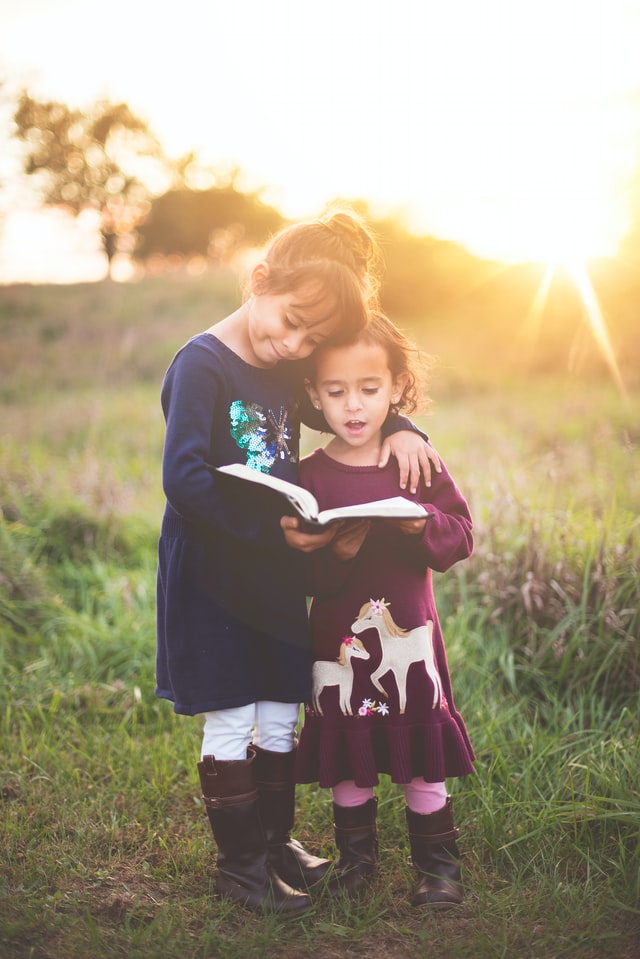When choosing literature for students to study, one of the main purposes is to help students connect to larger human issues and take new perspectives that would be impossible for them to understand without the power of storytelling. Reading or listening to stories is one of the best ways for humans to experience thousands of lives and understand the feelings and motivations of their fellow man better.
There are a variety of different learning objectives that teachers want to get across, but many literary texts tend to focus on the negative aspects of life when sometimes people need a more uplifting story. Recent research suggest that happy stories connect people better than stories that focus on the negative past.
Generally, the tales that teachers assign students are quite heavy, and many are down right dreary. They often retell horrors of the past, show terrible injustices, and give fearful warnings of dystopian futures. Many students complain that a lot of “great literature” is quite bleak. While it is important that students understand the harsh aspects of life and learn to not repeat the terrible mistakes of the past, recent research might encourage literature teachers to add a bit more variety into their text list for next year.

New Neuroscience Research on Stories
Research out of the Society for Neuroscience was recently published on the effects of the emotional context of a story and how that affected a region of the brain involved in interpersonal closeness as well as the participants subjective feelings connection to the speaker. (Xie et al.) The participants were told either happy, sad, or neutral stories based on videos that the speaker had watched. Throughout the experiment, the listeners and speaker were hooked up to EEG to record their brain activity.
The results showed that the regions of the brain related to interpersonal closeness in the speaker and listeners were most activated and synchronized with the sad stories when compared with either happy or neutral affect. So not only were listeners most primed for understanding and connection when listening to happier stories, their brains more closely matched the speaker’s activation.
On top of that, participants had better recall of the story when the emotional context was happy rather than sad or neutral as well. This shows that the benefits of positive emotion aren’t just that happy stories connect people, but that these happy stories also have benefits in helping the reader or listener to remember the story accurately.
Choosing Stories to Help Students Connect
The texts that most students read in school tend to be filled with pain, heartbreak, injustice, and tragedy, and there is good reason for this. Books like The Scarlet Letter, To Kill a Mockingbird, and Of Mice and Men are all common staples in middle and high schools around the United States, but it isn’t just the US that tends to choose tragic literature over literature with a happier affect.
The motivations for these make sense as there is a desire not to ignore the suffering of the past or pretend like injustices don’t exist. Stories that capture historical injustices and show the emotional toll of living as a disenfranchised minority are incredibly important to not repeat the mistakes of the past and help open the eyes of people who are lucky enough not to have gone through those experiences.
However, this research might make teachers reconsider the balance of emotional content of the texts they choose depending on their learning objectives. Oftentimes teachers say one of the great benefits of literature is helping to connect students to other people and help them understand other people’s perspectives.
While sugar coating everything isn’t the goal, showing stories of success, joy, and courage might be more effective at creating true understanding of different perspectives and highlighting shared values and qualities rather than focusing on differences due to mistreatment which can often just create pity and not connection.
A paper written on the effects of the political rhetoric surrounding welfare reform compared the impacts of discussion around welfare reform to television “pity porn” where poor conditions in third world countries are filmed and the local population exploited for donations from wealthy individuals. (Beresford) While most literature can certainly not be put in the same camp as this television “pity porn”, if teachers are looking to help their students connect more to their fellow man, they should consider adding more stories of success rather than stories which will elicit pity. This is because stories that highlight similar drives, passions, and dreams help connect students rather than just showing how much different and worse others have it, especially when it is very disconnected from anything that the student has ever experienced.

A common learning objective for literature teachers is to create understanding between their students and the themes of the story so that this will transfer into more connection and understanding from the student to other perspectives and types of people. These connections are then meant to transfer to the real world into better understanding between individuals. If teachers want to create a sense of closeness and unity, happier stories seem to be more effective at bringing people together.
Sad stories, especially about injustice or tragedy, usually highlight differences, such as in opportunities or treatment, while happy stories tend to focus more on shared human desires like success, understanding, and love. Having students read more stories about people from around the world and helping them focus on the similarities they share with their fellow human beings might be more effective in creating change in the world rather than focusing only on the problems of others. Happy stories connect people, and the world needs more human connection.
Want more like this? Make Lab to Class a part of your weekly professional development schedule by subscribing to updates below.
References
Beresford, Peter. “Presenting Welfare Reform: Poverty Porn, Telling Sad Stories or Achieving Change?” Disability & Society, vol. 31, no. 3, 2016, pp. 421–425., doi:10.1080/09687599.2016.1173419.
Xie, Enhui, et al. “Sharing Happy Stories Increases Interpersonal Closeness: Interpersonal Brain Synchronization as a Neural Indicator.” Eneuro, 2021, doi:10.1523/eneuro.0245-21.2021.



